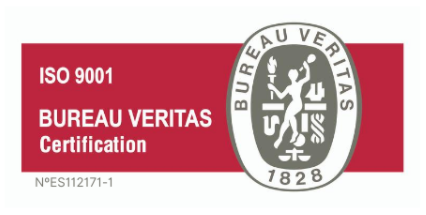Do you know how to plan the production of a company? The first thing you should do is to establish a work plan thanks to which you can organize orders taking into account available materials, delivery times, availability of workers, etc.
In other words, there are many factors to be taken into account that a priori seem to slow down the planning process. planning. However, it is crucial and there are many reasons to do so and for it to be advantageous in the medium or long term.
In summary, to production planning you need a work plan that takes into account:
- Available materials, delivery times, stock, etc.
- The number of workers, work shiftsvacations, etc.
- Production capacity of machines and employees, as well as knowledge of industrial automation .
- Target production times, linkage between operations, minimum quantity to be able to produce the next operation, changeover times between products, etc.
Reasons for professional production planning
There are many reasons to production planning and as soon as you start doing it you will wonder why you didn't start earlier as it has enormous economic advantages.
- In the first place, the production of new products will be much simpler, as it will be logical and orderly, taking into account the necessary and orderly, taking into account the necessary constraints.
- It is also possible to calculate in a more accurate and organized way the scheduling of materials, transport...
It is true that all these calculations can be carried out by one or several persons, i.e. they can be carried out "manually". However, this usually implies more errors and above all a much higher workload. In this type of manual planning methodologies there is no visibility of the deviation of the planning in real time, due to production emergencies, breakdowns or the deviation of direct labor.
For this reason, it is best to have a planning software system designed for companies and factories software system designed for companies and factories that are committed to Industry 4.0, such as our MES system. MES system system, which includes a module for industrial production management. Try it without commitment.
Failure to do so with the right system or starting to plan a company's production without having a proper system in place, details such as miscommunication with a supplier or a delay in materials could lead to a major problem.
In fact, with respect to suppliers, many companies and factories accept longer delivery companies and factories accept longer lead times for their customers in order to avoid delays for their customers in order to avoid delays that can cause major inconveniences and damage their brand image.
Most common production planning techniques
To establish production planning production planning techniques the three aspects mentioned above must be taken into account, as well as others such as:
- Short- and long-term planning.
- Production capacity.
- The level of inventories and how they are maintained from one period to the next, their materials, components, semi-finished products, finished products...
- The quantity to be manufactured in each period, and how to meet the demand, have an adequate stock, and adequate stockand so on.
- In addition, fixed costs and variable costs related to production.
The ultimate goal will be to to improve the yield margin, production margin and improve the rate of income and expenses. And of course, to increase quality.
To achieve this, all the techniques are grouped in different sections such as the following:
- Master" production plan: the idea is to specify the products to be manufactured, the quantities, periods... All this is collected in the master plan and the hours for each process, the workload, the materials needed and more are determined.
- Aggregate production planning: is when you seek to configure a large number of factors under optimal conditions taking into account inventories, production capacity, expected demand... thus it ends up being a global approach.
- Scheduling operations: has to be based on operational, analytical and graphical techniques... They are all part of the master plan and combine the capacity and constraints of the system.
- Capacity planning: The need for resources must be determined, seeking a balance between manufacturing and the capacity of the factory and warehousing company. The main goal is to avoid incidents in these steps.
- Quality control: the objective is to follow the specifications of functionality, attributes... and to avoid errors by creating certification standards and avoiding damage repair costs.
- Inventory control and planning: this is another set of techniques that start from the master plan to control and plan what materials are needed, what are the storage costs, the general time of each product in stock...
- Production control: Production control techniques include the work of monitoring the master plan and control over costs. It also takes into account the control of yield and production costs.

How to make a plan correctly
Now you know how to plan the production of a company by dividing jobs, equipment and techniques into groups. But, what do you have to take into account to avoid any mistakes? There are some factors that are very important and that, if you comply with them, will help you to improve the production plan. These are:
- Forecasting market expectations: the first thing to do is to calculate potential sales by obtaining historical data and other information in order to then be able to make a correct diagnosis.
- Determine the risk factors: to assess the risk factors, the history of data on possible damage, problems... must also be taken into account.
- The time available: it is important to calculate the available time of the team and human resources. That is to say, the period between processes so that they can flow.
- Standardize the steps: it is crucial to standardize steps and time to control sequences and have a correct process map.
- Inventory control: the objective is to update in real time the inventory with the least number of failures.
Finally, to know how to plan the production of a factory or company without errors and with a high profit margin, it is crucial to have a program that can control all the techniques and factors that affect the results. In MESbook we have a system capable of adapting to different factories and companies and that will help you to be a leader in planning. Contact our team.

Product Manager at MESbook
Marta Cejudo
Industrial organization engineer with 4 years of experience in real-time factory management as KAM.




